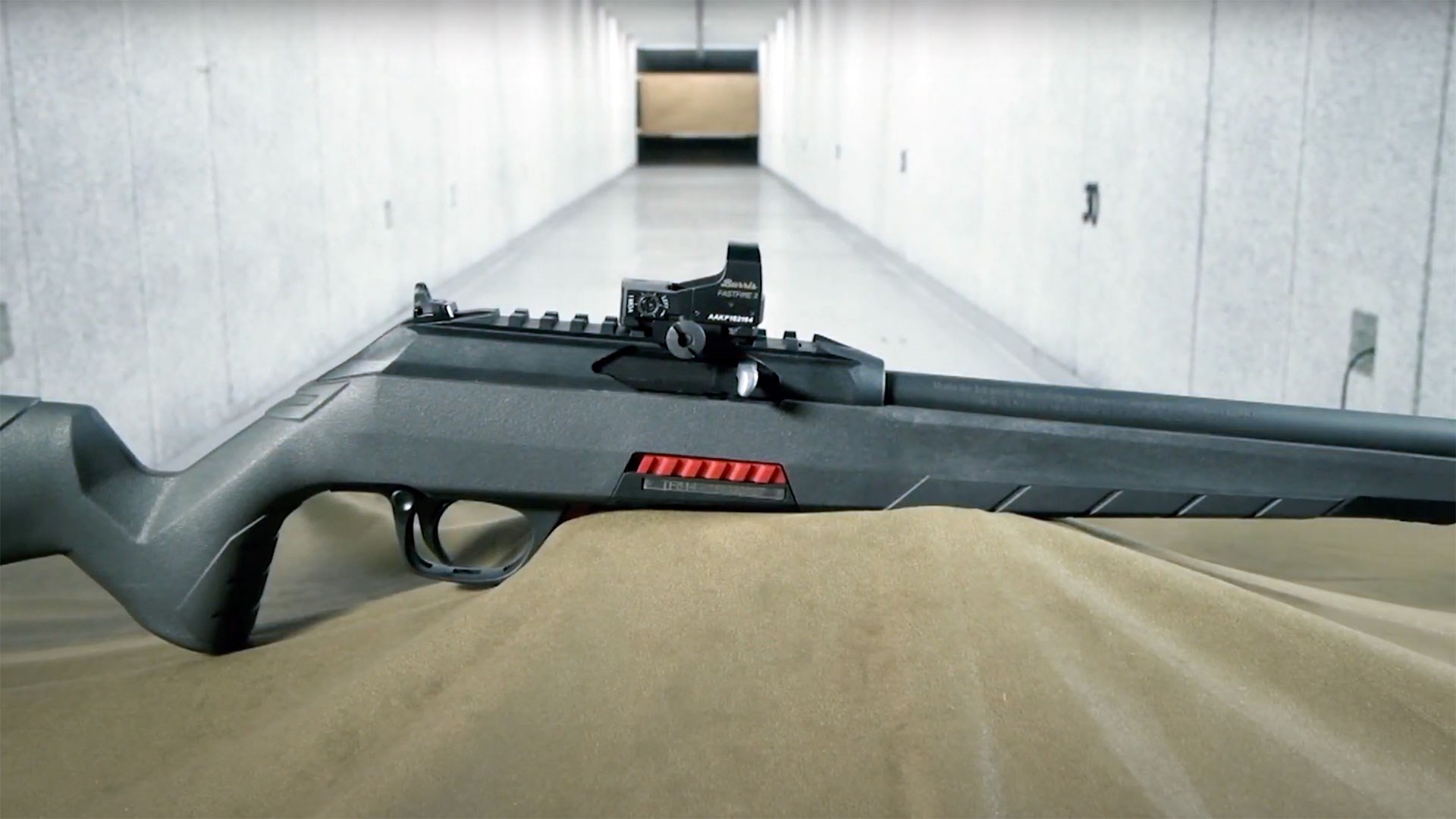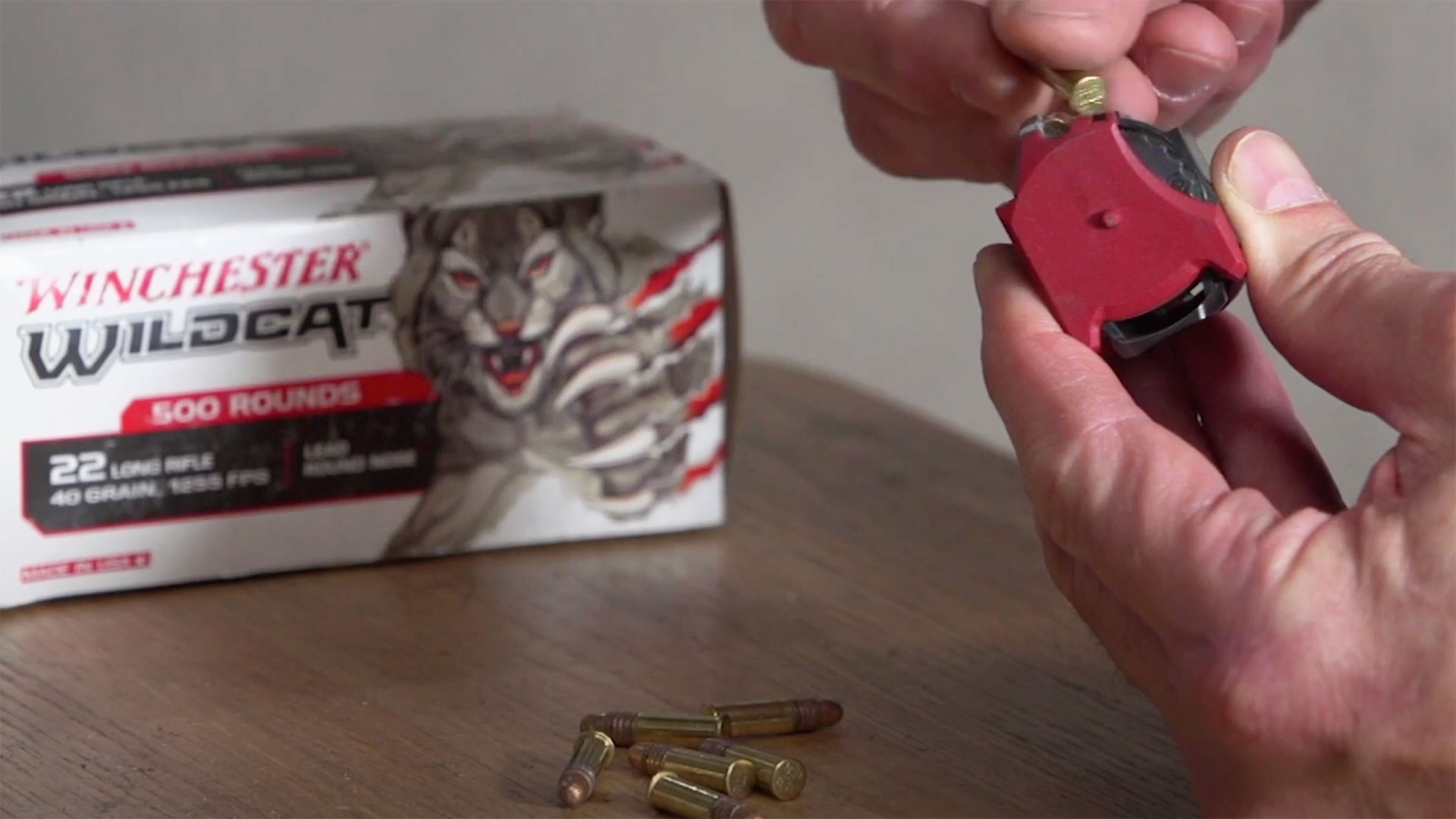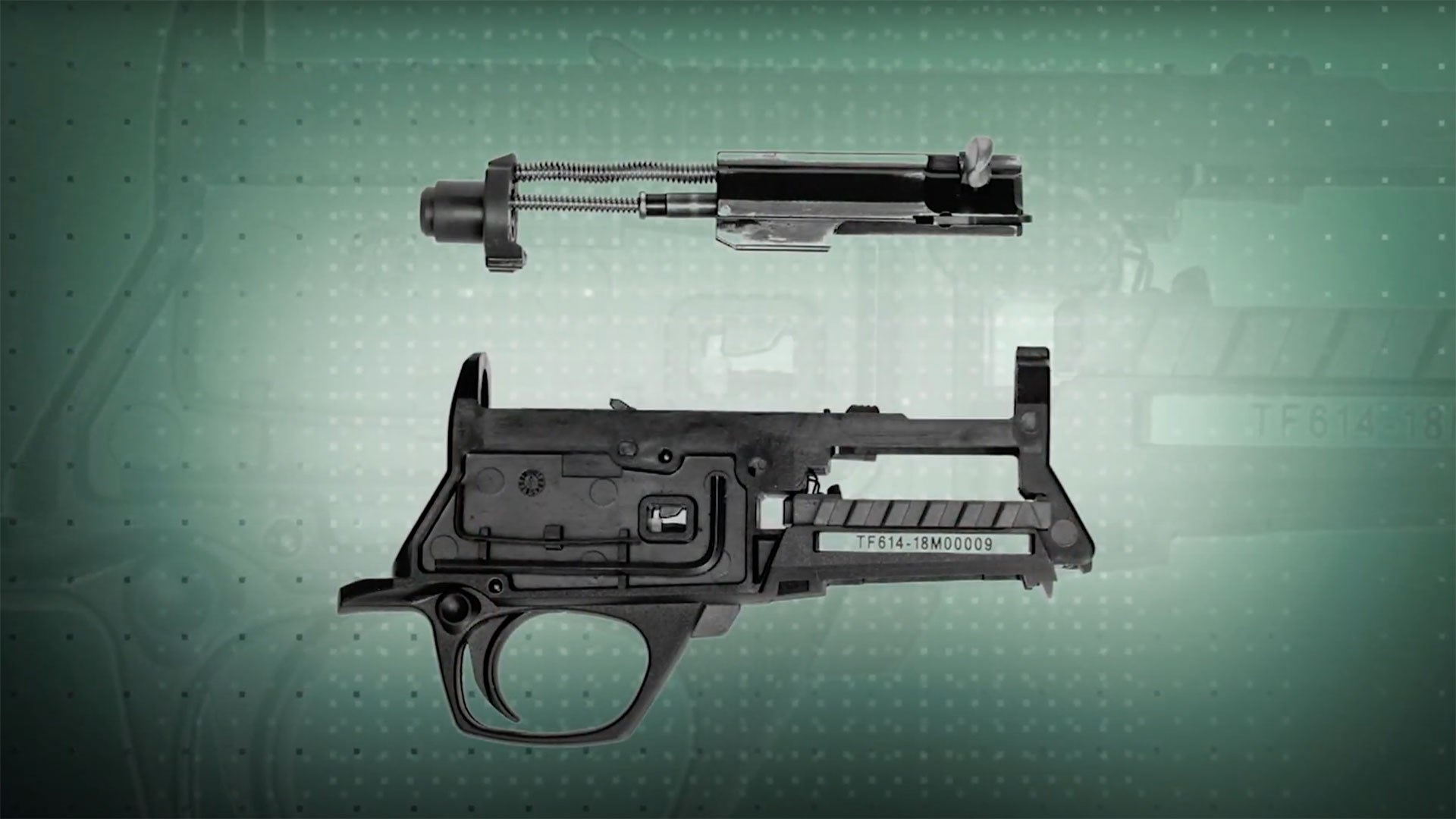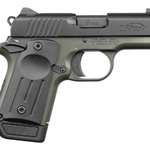Winchester is no stranger to the semi-automatic rifle or the rimfire market. Back in 2019, it introduced a new light-weight, semi-automatic rimfire carbine to its catalog, the Winchester 22 Wildcat.
Chambered for the prolific .22 LR cartridge, the Wildcat is constructed largely of polymer, which results in a rimfire carbine that weighs in at a mere 4 lbs. It comes standard with a 18" barrel, with an overall length of 36.75". The barrel is made from chrome-moly steel, with 1:16" twist button rifling, and shaped into a shorter contour. On top of the barrel, the Wildcat has a fixed front sight post, with an elevation- and windage-adjustable aperture rear sight housed at the tail end of the receiver. The receiver also has an integral Picatinny rail running along its top in front of the rear sight.
 A close-up view of the Winchester 22 Wildcat from the right side. Note one of the serrated magazine releases made from red plastic.
A close-up view of the Winchester 22 Wildcat from the right side. Note one of the serrated magazine releases made from red plastic.
The Wildcat is so lightweight partially due to the use of polymer for the construction of the stock, controls and other components, which includes its 10-round detachable magazine. The magazine is rotary-fed and based off the Ruger 10/22 magazines. As a result, the wildcat can accept 10/22 pattern magazines, which are plentiful in the aftermarket. Yet the Wildcat's magazine is unique in that it is relatively easy to disassemble for cleaning, and a knurled wheel allows the spring to be manually depressed for easier loading.
 Loading the Wildcat's 10-round magazine, which is based off the design of the Ruger 10/22 magazine. Also not the knurled wheel exposed at the back to help depress the spring.
Loading the Wildcat's 10-round magazine, which is based off the design of the Ruger 10/22 magazine. Also not the knurled wheel exposed at the back to help depress the spring.
While the Wildcat uses a traditional push-button safety, the magazine release is a little more complex. There are a total of three control surfaces that can be pressed to release the magazine. These areas are made apparent from color contrast, as they are made from red plastic. They include a lever in front of the magazine and two serrated slits on either side above the magazine. There is even a red plastic detent on the front face of the trigger guard that acts as a bolt hold-open button, much like the Ruger 10/22.
 The trigger guard and bolt assembly of the Wildcat as seen when removed.
The trigger guard and bolt assembly of the Wildcat as seen when removed.
Another interesting aspect of the 22 Wildcat is its ease of disassembly. All that is required to field strip the Wildcat is the depression of a red plastic button in a hole at the back end of the receiver. With the button depressed, The trigger guard and bolt assembly can be pulled out of the bottom. The barreled action can also be removed from the stock, but this requires two screws at the front and rear to be loosened.
 Shooting the Winchester 22 Wildcat on the range.
Shooting the Winchester 22 Wildcat on the range.
It should be noted that the Wildcat uses a striker-fired system instead of a traditional internal hammer. Winchester also redesigned the shape of the firing pin from the traditional chisel shape into a more rounded shape, to help increase reliable primer ignition with different brands of ammunition. The Winchester 22 Wildcat is still in production and available today, along with a threaded suppressor ready version, the Winchester Wildcat 22 SR. For more information on both versions of the Winchester Wildcat, visit winchesterguns.com.
To watch complete segments of past episodes of American Rifleman TV, go to americanrifleman.org/artv. For all-new episodes of ARTV, tune in Wednesday nights to Outdoor Channel 8:30 p.m. and 11:30 p.m. EST.
























